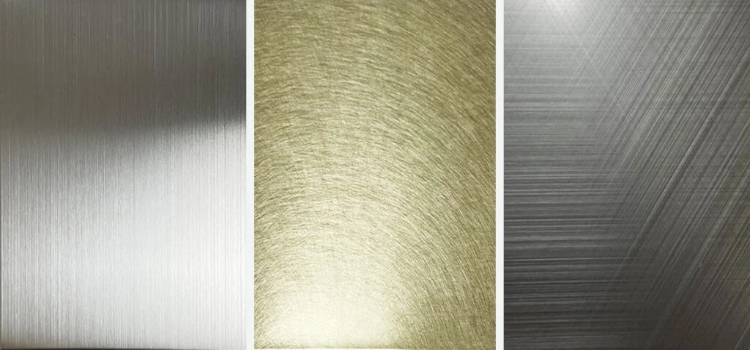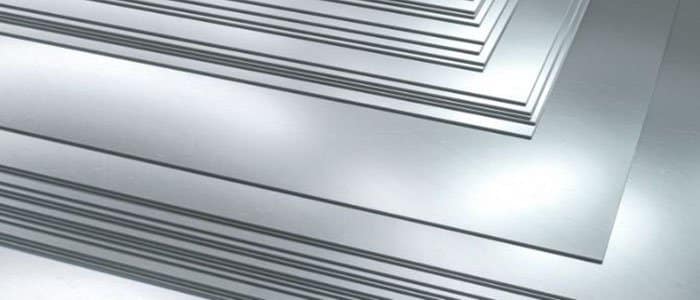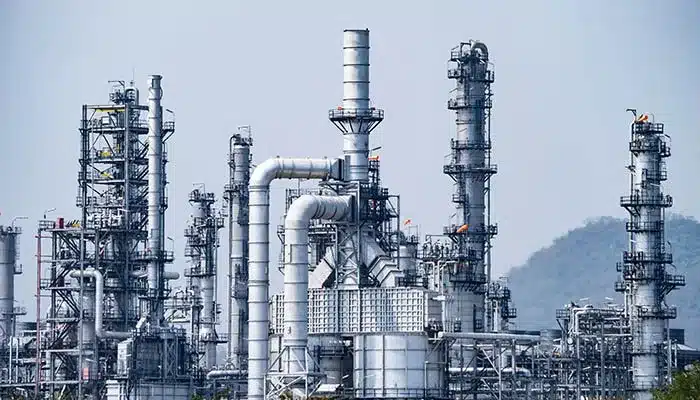In the fields of architectural hardware, high-end appliances, and modern design, one finish stands out: brushed stainless steel. It is known for its elegant look and strong durability. Its distinctive parallel grain pattern is instantly recognizable, conveying a sense of quality and modern elegance. But how is this unique finish created? And why has it become the material of choice across so many industries?
This guide will help you understand brushed stainless steel. It will explain how it is made, its main benefits, and its many uses.
What is Brushed Stainless Steel?
Brushed stainless steel is not a separate grade of stainless steel but rather a surface finish applied to various grades, most commonly 304 and 316. The process involves using an abrasive material to create fine, uniform lines (or “grains”) on the metal’s surface. This directional finish gives the metal a unique, satin-like texture that diffuses light, reducing glare and hiding fingerprints more effectively than a polished, mirror-like finish.
Brushed stainless steel covers a variety of surface treatments, including No. 4, No. 5 and HL (hairline). Each surface treatment follows different requirements and is suitable for various scenarios.

The Production Process: From Raw Sheet to Refined Finish
Creating the perfect brushed finish is a controlled mechanical process that requires precision. Here’s a step-by-step breakdown:
Material Selection: The process begins with a high-quality stainless steel sheet, such as grade 304 for general purposes or marine-grade 316 for superior corrosion resistance. The base material’s quality is crucial for a flawless final result.
Surface Preparation: The stainless steel sheet is first cleaned to remove any oils, dirt, or imperfections. It may then be lightly sanded to ensure a uniform starting surface.
The Brushing Technique: This is the core of the process. The sheet is fed through a machine equipped with a series of abrasive belts or brushes. These brushes, often embedded with fine abrasive particles, are moved consistently in one direction across the metal’s surface. The pressure, speed, and grit of the abrasive material are carefully controlled to achieve the desired grain width and depth.
Final Cleaning and Protection: After brushing, the surface is thoroughly cleaned to remove any metallic dust from the abrasion. Factories often add a protective plastic film to the surface to prevent scratches during manufacturing, shipping, and installation.
Key Advantages of a Brushed Finish
Aesthetic Appeal: The satin-like finish offers a modern, high-end look that complements a wide range of design styles, from industrial to minimalist.
Durability and Wear Resistance: The brushing process creates microscopic grooves that are excellent at hiding small scratches, dings, and signs of wear that would be highly visible on a polished surface. This makes it ideal for high-traffic areas and frequently handled objects.
Fingerprint and Smudge Resistance: The directional grain diffuses light and oils, making fingerprints and water spots far less noticeable. This is a significant advantage for kitchen appliances and public-facing surfaces.
Low Maintenance: Cleaning brushed stainless steel is straightforward. A quick wipe with a soft cloth and mild soap is usually enough to bring back its shine.
Corrosion Resistance: The inherent corrosion resistance of stainless steel (especially grades like 316) is preserved. The brushing process does not compromise this vital property, making it suitable for both indoor and outdoor applications.
Diverse Applications
The unique combination of beauty and resilience makes brushed stainless steel an incredibly versatile material. Its applications span numerous sectors:
Architecture and Construction: Used for elevator panels, handrails, cladding, decorative trim, and column covers. Its ability to withstand wear while maintaining a premium look makes it a favorite in commercial buildings.
Kitchen and Food Service: This is perhaps its most famous application. From refrigerators, ovens, and dishwashers to commercial worktables, sinks, and backsplashes, its hygienic, non-porous surface and durability are unmatched.
Automotive and Aerospace: Interior trim, dashboard accents, and exhaust tips often have a brushed finish. This adds a touch of luxury and sportiness.
Consumer Electronics: Laptops, smartphones, and smartwatches use brushed stainless steel or aluminum for a premium, tactile feel and a scratch-resistant exterior.
Medical and Laboratory Equipment: The material’s ease of sterilization and resistance to corrosion make it ideal for surgical instruments, medical carts, and laboratory casings.
Retail and Point of Sale: Store fixtures, display cases, and point-of-sale terminals benefit from the material’s modern look and ability to withstand constant public interaction.
Looking for a reliable supplier of high-quality stainless steel products? At Daxun Alloys Co., Ltd., we specialize in providing a comprehensive range of stainless steel, carbon steel, titanium plates, and other specialty alloys, all available with the perfect brushed finish for your project. Contact us today to discuss your requirements.




